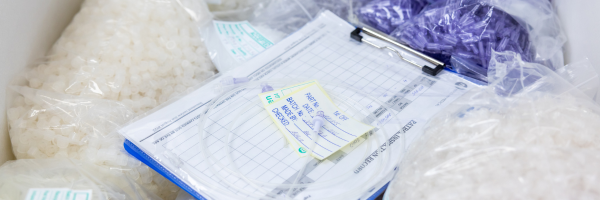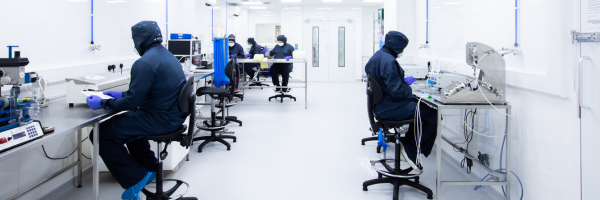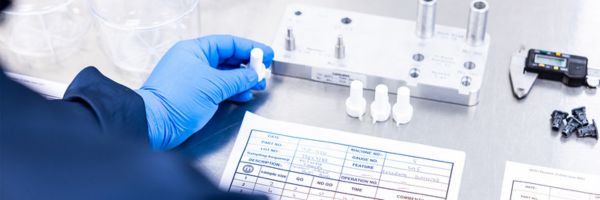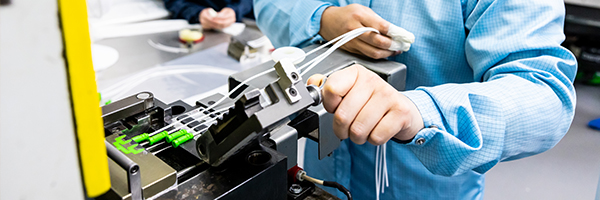
Quality medical devices are critical to the pharmaceutical and healthcare industries. For this reason, when customers approach us about their medical devices manufacturing, they normally have questions about our facilities and equipment, as well as the range of services we offer and our company ethos.
Below you will find the answers to some of the questions that our customers regularly ask us.
If you can’t find the answers you need, please do get in touch with a member of our team for more details or visit our frequently asked questions page.
Questions about medical device manufacture
In the early stages of development, those behind a product’s creation will often ask where they can get expert advice and guidance on how to manufacture a medical device.
We are always happy to chat through the production process and explain the comprehensive range of services we offer to manufacture any kind of medical device.
As well as being UK medical device manufacturers, we can also export to any country using our approved logistics suppliers. The sales price excludes delivery and any taxes applied, so this will need to be calculated when placing the order.
Please remember that medical products need to be manufactured using your own CE mark. We can introduce you to our preferred regulatory experts if you require additional expertise.
Medical device cleanroom assembly questions
Many of the questions we are asked are about our medical device cleanroom assembly services, most frequently regarding the cleanroom assembly facilities we have.
Our manufacturing and assembly facilities include 700m² of purpose-built clean rooms certified to ISO class 7. They are regularly validated to strict standards and routinely and rigorously inspected by the microbiological team
Each of the purpose-built Class 7 assembly cleanrooms has different capabilities. For example, one cleanroom houses a 10kw digitally programmable double-shuttle RF welder, while another features UV curing and bonding equipment and ultrasonic welding machines.
A third cleanroom houses programmable drilling machinery, pad printing and tube forming equipment to produce catheters and fluid lines, while the fourth houses custom-built robotic dipping and rotary inspection equipment.
Medical device injection moulding questions
Injection moulding facilities play an important part in our medical device manufacturing processes and we have a range of machinery with different specialisations. These facilities are internally audited using rigorous cleanroom facility inspection, testing and validation systems.
Many people ask if their medical component is mouldable and we can confirm that the vast majority of designs can be 3D printed or prototyped, however, mass production via injection moulding has its limitations.
We do, however, regularly support customers in more complex injection moulding processes, such as high processing temperatures or significant drying requirements, and we have the latest certification to ISO9001 and ISO13485, and FDA registration for customers who plan to export to US markets. For more details, see our injection moulding plant list or ask a member of our team to advise and assist you.
Disposable medical devices
One of the biggest types of medical device manufacturing that we do is the manufacture of disposable medical devices – the type of medical product that is used on one patient and then discarded.
You might find it useful to know that our disposable medical devices can be:
- Individually packaged
- Clinically clean / Non-sterile / Sterile
- Used by trained physicians
- Used in hospitals / GP surgeries and homes
- Made in traceable batches
- CE marked by a regulatory body
Customers sometimes ask us if their medical device is suitable in a disposable format; if this applies to you, please talk to a member of our expert team to find out more.
Questions about medical device project management
Medical device manufacturing is made up of many stages, run from the initial design concept to storage and logistics upon completion.
We get many enquiries about which stages of medical device development we can help with and the simple reply is that we are an end-to-end contract medical device manufacturing partner whose services cover everything from design for manufacturing through to medical product assembly, packaging, storage of medical equipment, components and raw materials and dispatch.
However, if you only want to outsource part of your medical device manufacturing, we can help with that, too.
Medical device manufacturing quality and regulatory compliance
When it comes to the quality of medical devices, customers often need to know the regulations and standards that our medical devices are manufactured to.
All our medical device products are thoroughly tested and inspected and all onsite test equipment is calibrated and traceable to national and international standards.
Our quality system complies with all the latest European and FDA standards, including ISO 13485, ISO 9001 and ISO 14001 and our sterilisation services include fully compliant validation for your manufactured medical supplies, while the packaging and labelling for medical products is fully compliant, too.
If you need to know what the difference between medical device verification and validation is, then verification is checking each piece of medical equipment meets the specification, whereas validation is the process of proving the manufacturing process repeatedly produces the correct medical device.
Talk to us about your medical device manufacturing project
Meridian Medical is an established and experienced contract medical equipment manufacturer specialising in a wide range of medical device design, development and supply services.
To find out more about how Meridian Medical can help you with your medical product design and manufacture, get in touch today by filling out our online form or contacting us on 01903 732344 or info@meridian-medical.com.
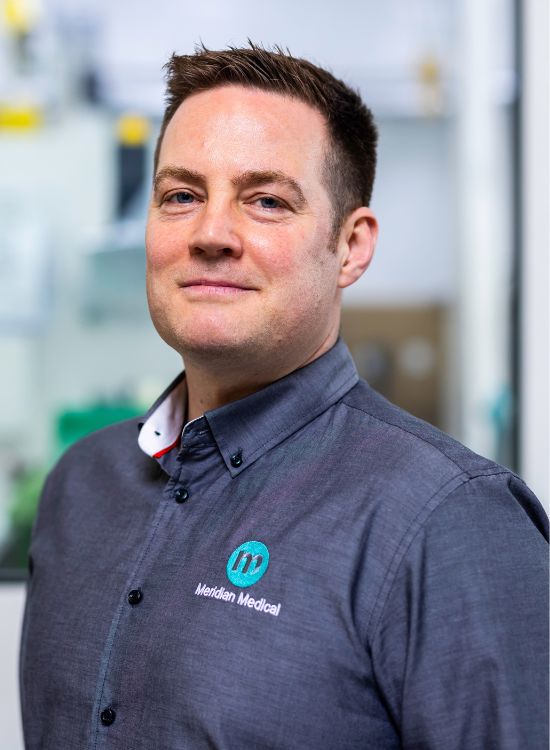
Author: James Fenton, Managing Director
James Fenton, Managing Director of Meridian Medical since 2017, has over 20 years of industry experience. He has been pivotal in developing and producing over 500 types of single-use medical devices, including CE-marked class 2 and 3 devices. With a strong focus on business strategy, project management and customer support, James ensures Meridian Medical's agility and innovation. His expertise is backed by qualifications in Business Studies and Medical Process and Equipment Validation, plus extensive industry training. James's insights into the industry that he has dedicated his entire career to provide a bank of invaluable information aimed at increasing knowledge of and driving advancements in medical device manufacturing.

